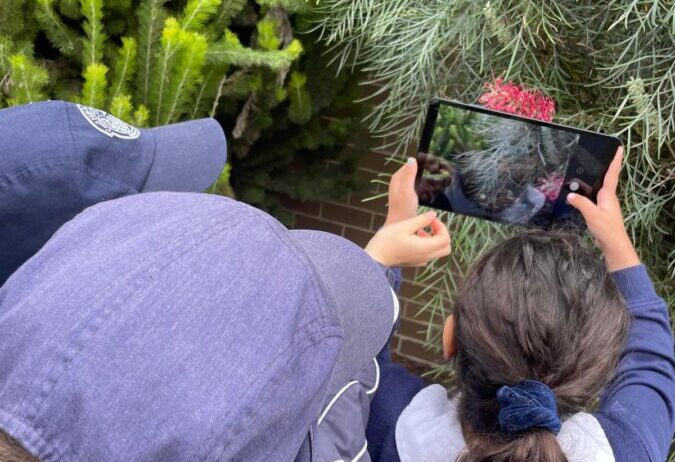PlantingSeeds is proud of its early foray into the world of citizen science and BioBlitzes.
This year marks the 4th year we have been running the National School Citizen Science BioBlitz (in September’s Biodiversity Month). It is supported by the CSIRO’s Atlas of Living Australia, the Australian Citizen Science Association and various State Departments of Education and Offices of the Chief Scientist.
And we know that government reports and academics are crying out for more citizen science and that many are heeding the call.
However, as Dr Judy Friedlander will discuss at the upcoming Australian Citizen Science Association CitSciOz25 Conference in Melbourne, many teachers lack the knowledge and support to participate in this important activity.
PlantingSeeds can help teachers to become more proficient in citizen science.
To join the National School Citizen Science BioBlitz (schools need to participate this September), click here: https://www.ps.org.au/citizen-science/bioblitz#join
Participating schools receive comprehensive teacher support, including curriculum-linked activities that connect field observations to classroom learning. The program aligns with multiple learning areas, from biological sciences and environmental studies to data analysis and digital technologies.
BioBlitzes can inspire students to connect with their local environment and provide excellent immersions for teachers to learn the basics about citizen science. PlantingSeeds runs a free course every year for interested teachers and also provides support.
There are fantastic curriculum and STEM links and new ways for teachers to present data collection and presentation.
For example, students can create a table and record the names and numbers of birds they see outside. They can then use the Atlas of Living Australia (ALA) to see which birds have been recorded in their local area. Teachers then discuss with the students whether the information from the ALA matches what they saw in the school yard.
Or, students can choose some of the birds from their local area. Using the ALA, iNaturalist, and other sources, they can research information about the bird and, in a table, write a sentence about what it eats.
Benefits of citizen science and BioBlitzes for students include learning to recognise native species and introduced species, formulating data collection and presentation skills, and developing critical thinking skills about ecosystem balance and conservation challenges.
Students feel motivated knowing that their observations help advance fundamental scientific knowledge about species distribution, population trends, and ecosystem health.
What is a BioBlitz?
A BioBlitz is essentially a survey over a designated period of time that captures the biological diversity of a specific area. Unlike conventional scientific surveys, BioBlitzes are teamwork events where professional scientists collaborate with citizen volunteers to identify and record species across various taxonomic groups. These groups might include vascular plants, birds, mammals, insects, fungi, molluscs, and other organisms that form a complex web of life within an ecosystem.
A BioBlitz is valuable because it serves two main purposes: collecting important scientific data and offering practical environmental education. Participants develop practical skills in identifying species, observing ecosystems, and gathering data – skills that align with STEM learning goals and curriculum standards.
Australia's mega-diverse status as one of only 17 countries recognised by the United Nations means students participating in BioBlitzes have extraordinary opportunities to encounter unique species. Here are some examples of the biodiversity students might document:
Plant Life
- Native flowering plants: Eucalyptus species, bottlebrush, grevillea varieties
- Ground cover species: Native grasses, wildflowers, and seasonal herbs
- Non-vascular plants: Mosses, liverworts, and lichens growing on rocks and trees
Animal Life
- Birds: Rainbow lorikeets, magpies, kookaburras, mynas, and honeyeaters
- Insects: Native bees, butterflies, beetles, and beneficial garden insects
- Small mammals: Possums and native rodents
- Reptiles: Skinks, geckos, and small lizards
Decomposers and Ecosystem Engineers
- Fungi: Mushrooms, bracket fungi, and soil microorganisms
- Invertebrates: Earthworms, spiders, millipedes, and soil-dwelling insects
#biodiversity #bioblitz #climate #nature #ThinkGloballyActLocally #BiodiversityRegeneration #citizenscience #nationalbiodiversitymonth #empoweringstudents #STEMeducation
Article by Amritha Shenoy
Links referred
National Geographic - https://education.nationalgeographic.org/resource/bioblitz/
Australian Citizen Science Association. - https://citizenscience.org.au/the-australian-bioblitz-hub/
PlantingSeeds Projects - https://www.ps.org.au/citizen-science/bioblitz
NSW Department of Education. (2024) - https://education.nsw.gov.au/teaching-and-learning/curriculum/stem/stem-video-resource-catalogue/blitzing-biodiversity
Education Today - https://www.educationtoday.com.au/news-detail/Citizen-Scientists-N-5985
iNaturalist Platform – https://help.inaturalist.org/en/support/solutions/articles/151000170805-inaturalist-educator-s-guide#Examples

